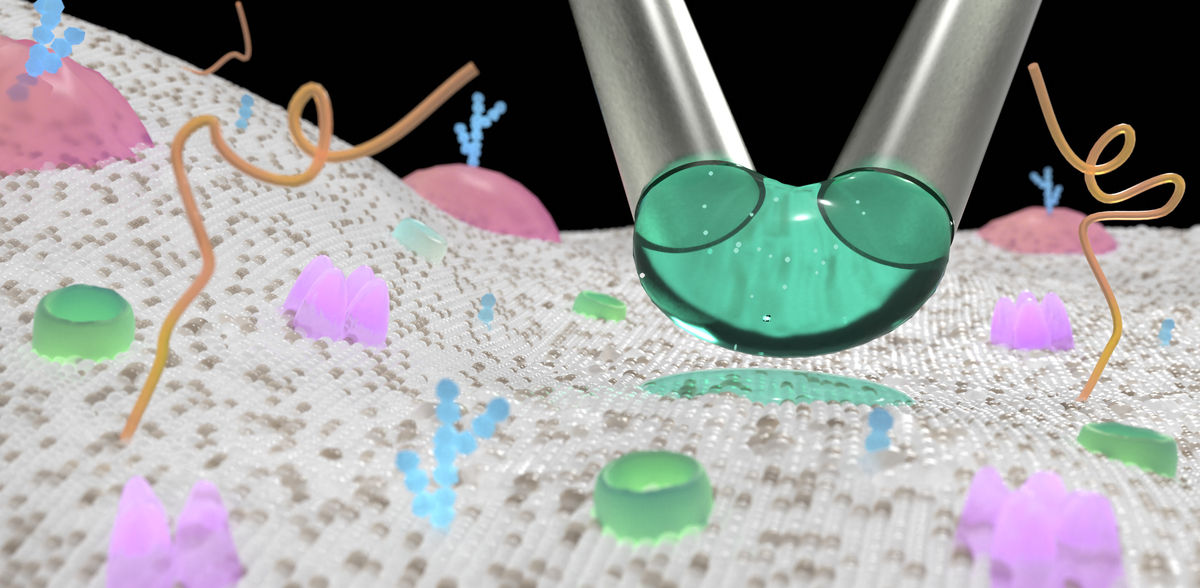µkiss-and-tell: A new method for precision delivery of nanoparticles and small molecules to individual cells
"Like a paintbrush", easy and cost-effective to use
The delivery of materials to individual cells with exactness and exclusivity has long been a much sought-after ability in biology. With it comes the promise of deciphering many longstanding secrets of the cell. A research team at the Max-Planck-Zentrum für Physik und Medizin, Erlangen led by Professor Vahid Sandoghdar has now shown how small molecules and single nanoparticles can be applied directly onto the surface of cells. In the study, recently published in Nature Methods, the scientists describe the technique as a "μkiss" (microkiss) – an easy and cost-effective new method, unlocking new possibilities in single-cell science with a view towards next generation therapeutic applications.
Traditional approaches in biology often consider characteristics across entire cell populations, missing the nuanced variations in properties from one cell to another. To investigate biology more precisely at the individual cell level, the development of new tools and methods is imperative. "A crucial gap remains in our ability to administer chemicals, labels, and pharmaceuticals to individual cells with precision and control, over short durations and miniscule microscopic length scales", says Professor Vahid Sandoghdar, Director of the Max Planck Institute for the Science of Light and Max-Planck-Zentrum für Physik und Medizin. Prof. Sandoghdar and his team have been actively addressing this challenge.
"Like a paintbrush", easy and cost-effective to use
The researchers devised a simple yet elegant solution to this problem: using two closely placed micropipettes with an opening as small as just one micrometer, the scientists could create a stable micro-sized droplet of material at the micropipette ends by using one micropipette to dispense the material, while the other suc- tions it in at a slightly higher rate. "It is then just like a paintbrush", says Richard W. Taylor, Post-doctoral researcher and member of the team, adding "You can easily maneuver the micropipettes around, and gently brush this confined droplet against your chosen cell – delivering a tiny μkiss of material".
This simple implementation, using readily available components allows their technique to be easily implemented at low cost on any microscope within biologically-orientated laboratories. "The cost-efficient and pragmatic approach of our solution is important for its use in practice", says Prof. Sandoghdar, adding "The lack of similar solutions has so far delayed progress towards new therapeutic approaches at the single-cell level".
Full control over location, time and scale
The new method places the experimenter in full control. "With μkiss, we achieve a completely new dimension in the precise application of substances to cells", explains Cornelia Holler, a doctoral student in Biology and member of the research group. Materials can now be precisely delivered to any chosen cell at the sub-cellular level, with complete control over the time and position the material is in contact with the cell. "We can now watch entire biological processes, such as the uptake of iron by the cell, without missing a step – this allows us to finally piece together the puzzle of the complex characteristics of each individual cell," says Holler.
Recently, the team achieved the precise placement of a single virus-like particle onto a live cell. This experimental ability creates an opportunity to scrutinize the intricacies of disease propagation, providing full control over the location, timing, and extent of cell infection. "The ability to μkiss opens new pathways for quantitative studies in cell biology and Medicine", says Professor Sandoghdar.
Original publication
Most read news
Original publication
Cornelia Holler, Richard William Taylor, Alexandra Schambony, Leonhard Möckl, Vahid Sandoghdar; "A paintbrush for delivery of nanoparticles and molecules to live cells with precise spatiotemporal control"; Nature Methods, 2024-2-12
Organizations
Other news from the department science

Get the life science industry in your inbox
By submitting this form you agree that LUMITOS AG will send you the newsletter(s) selected above by email. Your data will not be passed on to third parties. Your data will be stored and processed in accordance with our data protection regulations. LUMITOS may contact you by email for the purpose of advertising or market and opinion surveys. You can revoke your consent at any time without giving reasons to LUMITOS AG, Ernst-Augustin-Str. 2, 12489 Berlin, Germany or by e-mail at revoke@lumitos.com with effect for the future. In addition, each email contains a link to unsubscribe from the corresponding newsletter.
Most read news
More news from our other portals
See the theme worlds for related content
Topic world Pipetting
Pipetting is one of the most basic yet critical techniques in the laboratory. It enables the precise and controlled transfer of liquids, which is essential for accurate measurements and reliable results. Whether in DNA analysis, cell culture or biochemical assays, correct pipetting significantly influences the quality of the results.
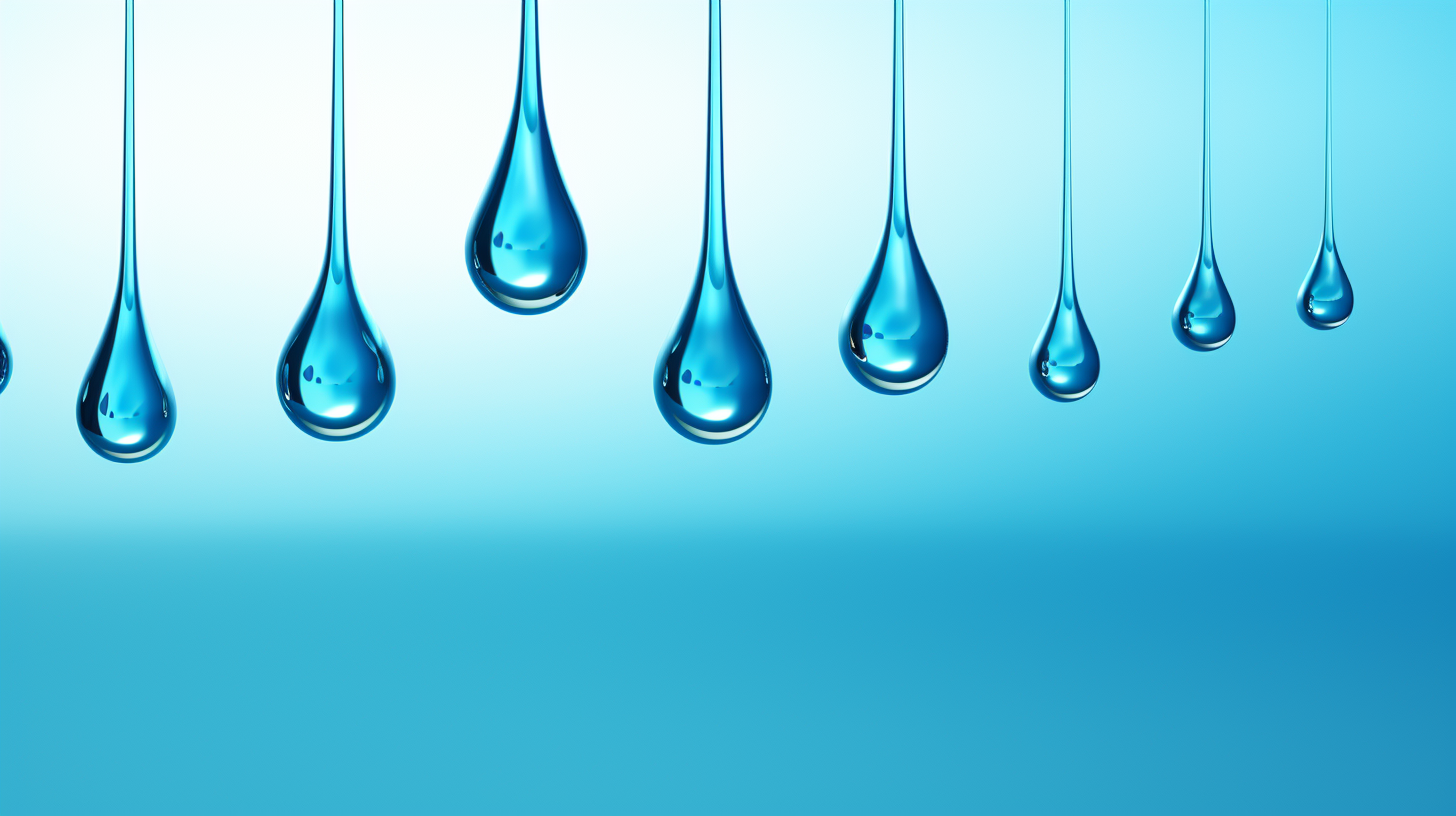
Topic world Pipetting
Pipetting is one of the most basic yet critical techniques in the laboratory. It enables the precise and controlled transfer of liquids, which is essential for accurate measurements and reliable results. Whether in DNA analysis, cell culture or biochemical assays, correct pipetting significantly influences the quality of the results.
Topic World Cell Analysis
Cell analyse advanced method allows us to explore and understand cells in their many facets. From single cell analysis to flow cytometry and imaging technology, cell analysis provides us with valuable insights into the structure, function and interaction of cells. Whether in medicine, biological research or pharmacology, cell analysis is revolutionizing our understanding of disease, development and treatment options.

Topic World Cell Analysis
Cell analyse advanced method allows us to explore and understand cells in their many facets. From single cell analysis to flow cytometry and imaging technology, cell analysis provides us with valuable insights into the structure, function and interaction of cells. Whether in medicine, biological research or pharmacology, cell analysis is revolutionizing our understanding of disease, development and treatment options.
Last viewed contents
Anemia
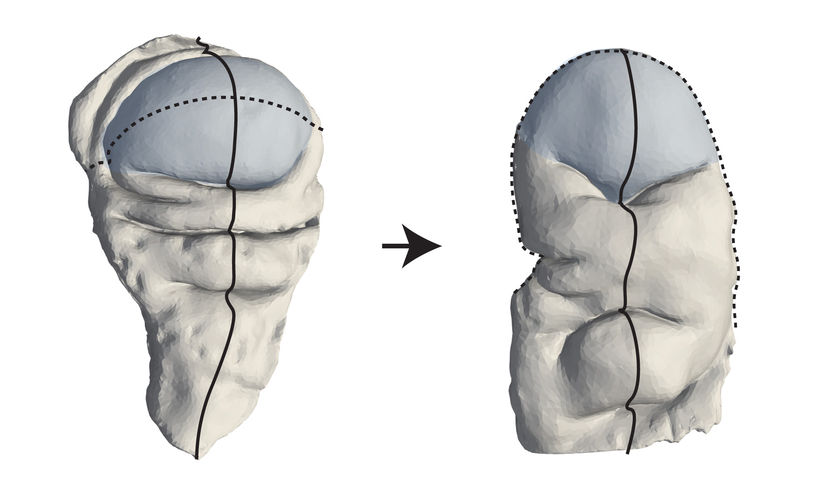
A New Mechanism for Shaping Animal Tissues - Dresden researchers discover a new mechanism for three-dimensional tissue shape changes in animals.
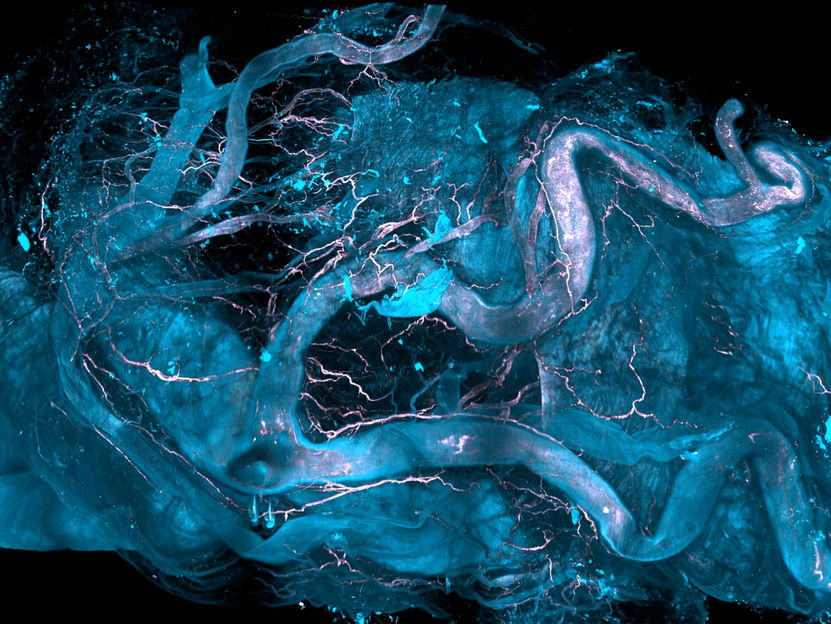
Novel spatial-omics technology enables investigation of diseases at their early stages - How can you trace a single diseased cell in an intact brain or a human heart?
A long day for microbes, and the rise of oxygen on Earth
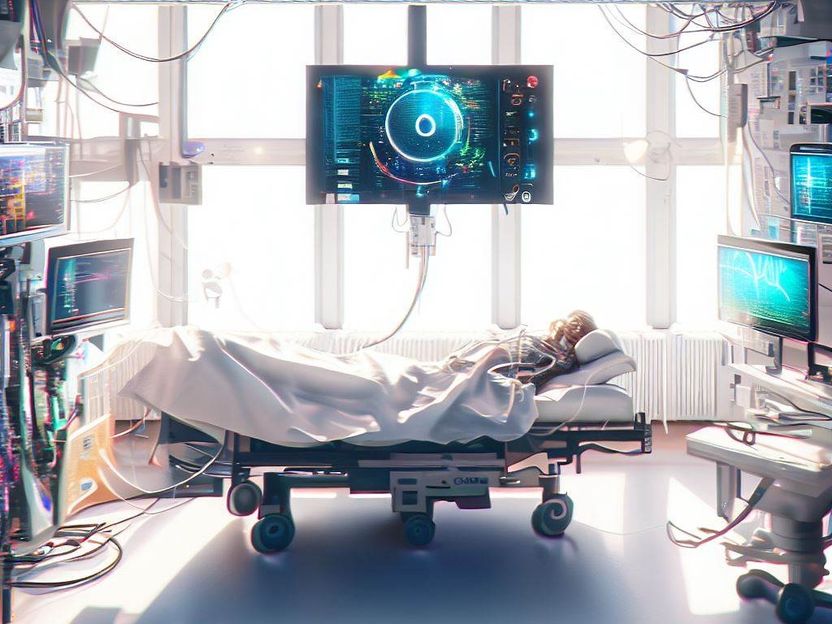
Better than Humans: Artificial Intelligence in Intensive Care Units - An AI can suggest appropriate treatment steps in cases of blood poisoning: The computer has already surpassed humans in this respect
Patellar_reflex
Seymour_S._Kety
Congenital_absence_of_the_vas_deferens
Mucolipidosis
Cerenis Reports Positive Results for Phase 1 Study of CER-001, an HDL mimetic, for the Treatment of Cardiovascular Disease
Deer_Horn_Knives

